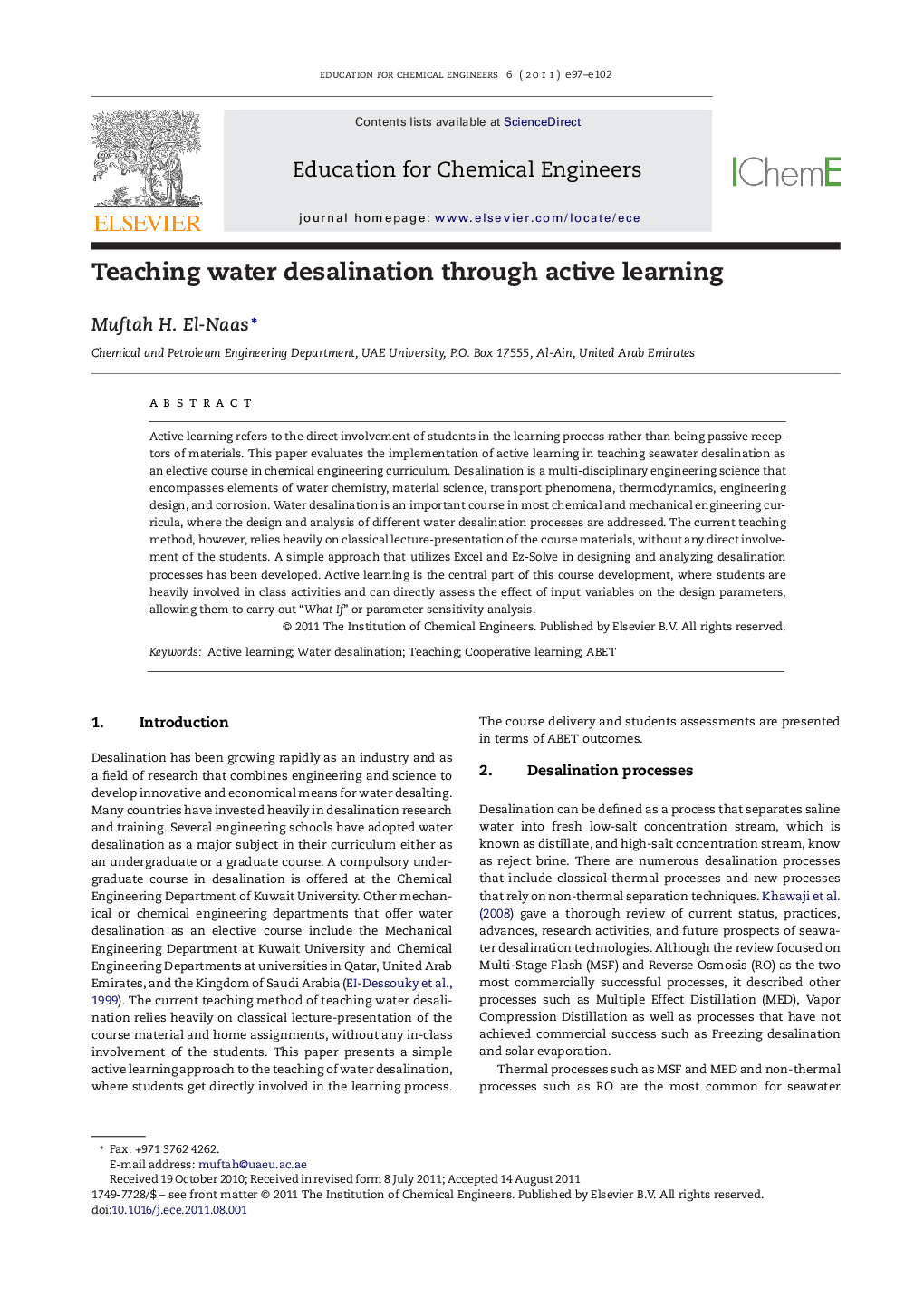| Article ID | Journal | Published Year | Pages | File Type |
|---|---|---|---|---|
| 178541 | Education for Chemical Engineers | 2011 | 6 Pages |
Active learning refers to the direct involvement of students in the learning process rather than being passive receptors of materials. This paper evaluates the implementation of active learning in teaching seawater desalination as an elective course in chemical engineering curriculum. Desalination is a multi-disciplinary engineering science that encompasses elements of water chemistry, material science, transport phenomena, thermodynamics, engineering design, and corrosion. Water desalination is an important course in most chemical and mechanical engineering curricula, where the design and analysis of different water desalination processes are addressed. The current teaching method, however, relies heavily on classical lecture-presentation of the course materials, without any direct involvement of the students. A simple approach that utilizes Excel and Ez-Solve in designing and analyzing desalination processes has been developed. Active learning is the central part of this course development, where students are heavily involved in class activities and can directly assess the effect of input variables on the design parameters, allowing them to carry out “What If” or parameter sensitivity analysis.
► An active learning approach has been assessed for teaching seawater desalination. ► Desalination is a multi-disciplinary field that combines basic engineering science and design. ► Most current teaching methods rely on lecturing without any direct involvement of the students. ► A simple approach utilizing Excel and Ez-Solve in analyzing desalination units has been developed. ► Students are involved in class activities to assess the effect of input variables on process design.
